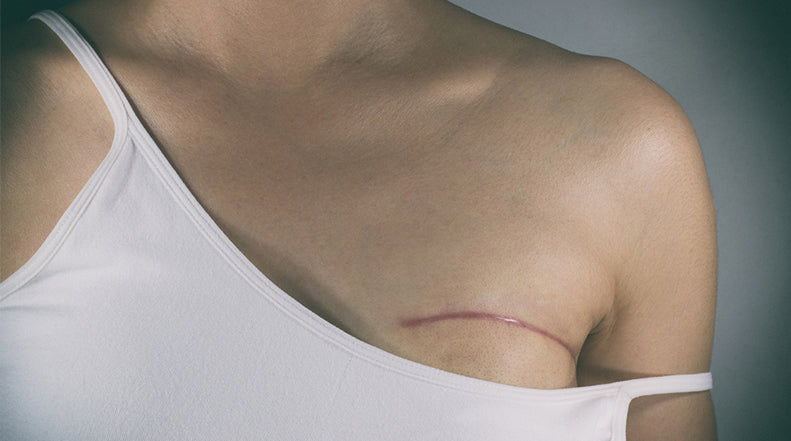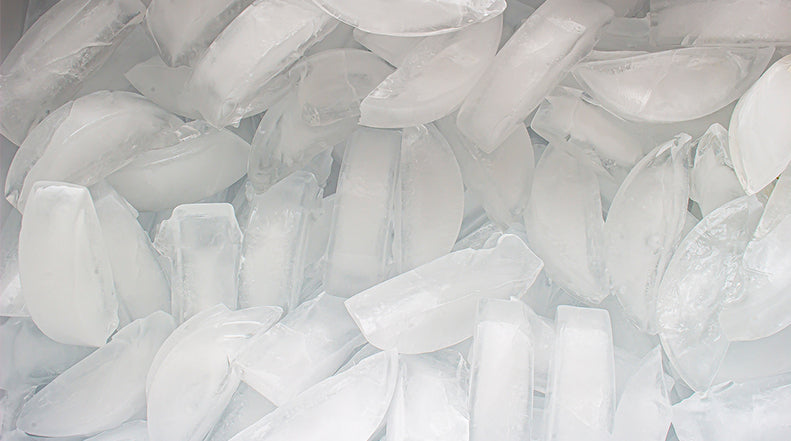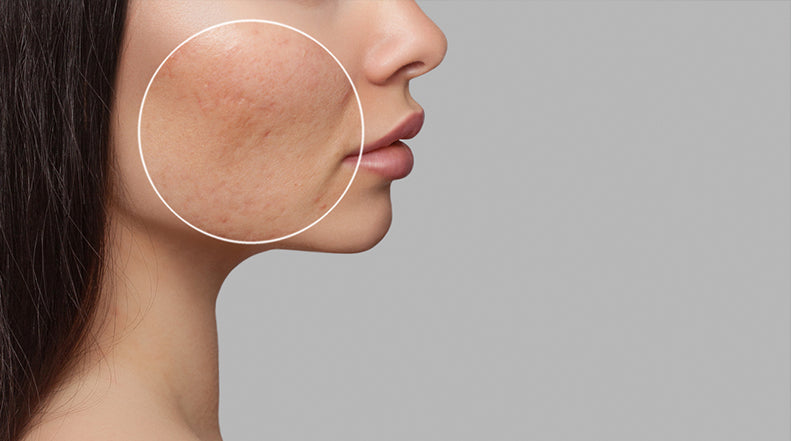The Reason Why Scars Change Color

You’ve probably noticed that no two scars look the same. Scars can vary in size, shape, texture, and color, all depending on the cause and severity of injury. In previous posts, we’ve discussed different types of scars, such as raised, sunken, stretched, and contractures. However, we have yet to discuss why scars change colors, such as red, purple, dark brown, or white. Thus, this post will provide you with the reasons scars change colors, as well as what you can do to make your discolored scar less noticeable.
WHY DO SCARS FORM?
Before we get into why scars change colors, it’s important to understand why scars form. After an injury to the skin, such as a burn, cut, or surgery, scars form as a result of the body’s natural wound healing response.
Wound healing is a complex process that involves four main phases: hemostasis, inflammation, proliferation, and tissue remodeling. Hemostasis simply means a blood clot forms to stop the flow of blood. Inflammation occurs due to blood vessel dilation and the accumulation of nutrients and cells that work to repair the damaged tissue. Proliferation means that the cells around the wound begin to multiply in order to form the new tissue that will seal the wound. Lastly, tissue remodeling involves production of a protein called collagen to support the new tissue. Scars are formed during this final stage of wound healing.
RED OR REDDISH-PURPLE SCARS
In the initial stages of wound healing, the wound and developing scar appear red or reddish-purple. This is because the injured area sends signals to the body to direct more blood flow to the area to help the healing process. Part of this new blood blood flow is created by the spontaneous development of new blood vessels, something called angiogenesis. Additionally, existing blood vessels will dilate to allow even more blood supply as well as inflammatory mediators, immune cells, nutrients, and growth factors to enter the area and repair the damage. During these processes, a person will begin to experience the physical effects of inflammation, such as swelling and a red or reddish-purple appearance to their scar.
Most of the time red or reddish-purple scars will fade in color as the wound heals, which typically takes around 12 months. In some cases, however, scars can remain discolored. This occurs most frequently with keloids and hypertrophic scars. Both of these scar types have a red, dark appearance, are raised above the skin, and can sometimes feel lumpy. Also, both keloids and hypertrophic scars are formed due to excess collagen production during the wound healing process. The main difference between a keloid and a hypertrophic scar is that keloids grow beyond the boundaries of the original site of skin injury, whereas hypertrophic scars remain confined to the injured area.
WHITE SCARS
Scars that appear white in color are called hypopigmented scars. Hypopigmented scarring is a common complication, particularly in patients who have undergone surgical procedures, deep or medium-depth resurfacing procedures, or have a prior history of traumatic wounds or burns. According to a publication in the Indian Journal of Dermatology, improving the appearance of hypopigmented scars has remained a challenge because of the limited efficacy, variable safety, and limited availability of effective and practical treatment options with long-lasting results. Several methods have been suggested to treat hypopigmented scarring, such as skin grafting, surgical excision, dermabrasion, chemical peels, and various forms of phototherapy and laser resurfacing. However, the efficacy of these methods is limited, and there is currently no gold standard.
PREVENTING AND TREATING DISCOLORED SCARS
The best way to prevent a scar from becoming discolored is to take good care of your healing wound. Keep the area clean and dry to help prevent infection or inflammation, both of which can have a negative effect on scar appearance.
Furthermore, it’s imperative to avoid exposing your scar to sunlight as the sun’s UV rays can cause hyperpigmentation in unprotected scars. Hyperpigmentation refers to dark brown spots that form on the scar due to an overproduction of the skin pigment melanin. Once formed, this brown discoloration can be permanent. If you cannot avoid sun exposure, it’s important to protect your scar from the sun by using a broad spectrum SPF 30 sunscreen.
Another way to prevent and also treat discolored scars is to use silicone gel products. Scar management experts consider silicone-based products, such as sheets and gels, to be the gold standard, first-line, non-invasive option for the prevention and treatment of scars, both new and old. Furthermore, there have been over one hundred clinical studies confirming silicone gel’s effectiveness in treating scars. Improvements include softening, flattening and a reduction in discoloration. The sooner the products are applied after the scar has formed, the better the expected results. Unfortunately, no topical treatment, even silicone gel, can restore color to a hypopigmented scar, which is why it is important to follow proper wound care to prevent discoloration.
NewGel+ offers the widest variety of silicone gel products available. Our adhesive silicone products, such as sheets, strips, and shapes, improve scars by providing a combination of occlusion (seals the scar from exposure to air), hydration, elevated skin temperature and continuous light pressure. Although adhesive silicone products are considered the first choice for scar management, NewGel+E silicone gel was developed for use when sheeting would be inconvenient, hard to secure, or unsightly. NewGel+E silicone gel improves scars by providing a combination of occlusion and hydration, and is also enhanced with 1% vitamin E to soften and moisturize the skin.
View the NewGel+ collection now to find the perfect product to help your scar heal as close as possible to your normal skin color and texture.




Comments